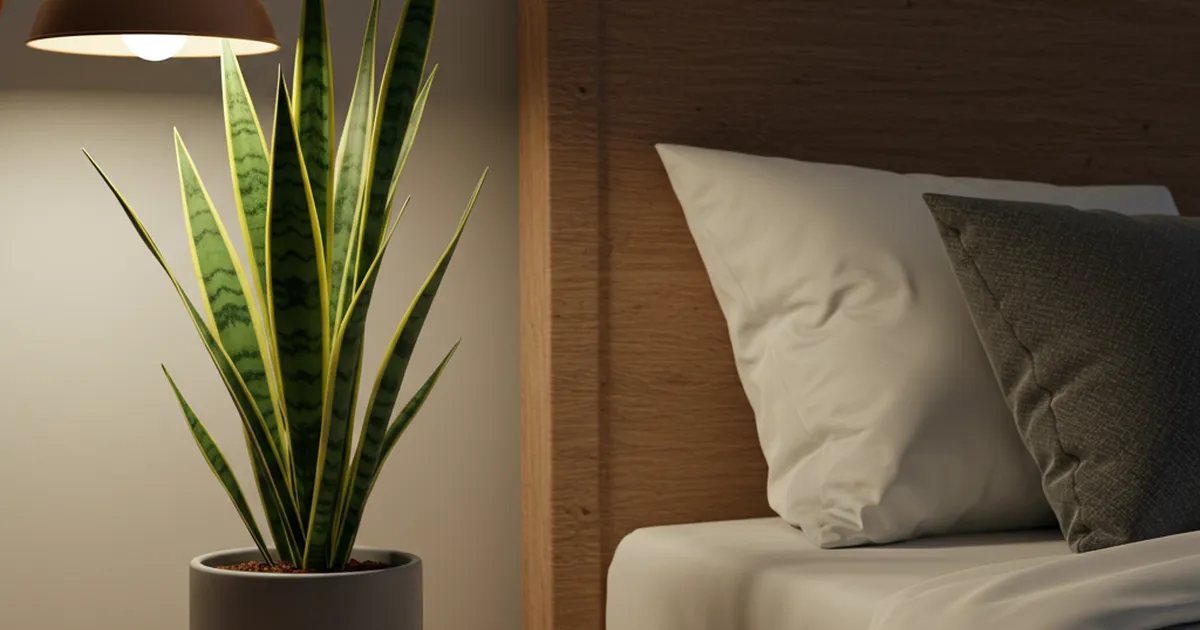Introduction:
The African spear plant, also known as the cylindrical snake plant, is a succulent indoor plant with spear-shaped, gray-green leaves that have subtle stripes and pointed tips. It thrives in hot, dry climates with well-draining sandy soil, preferring morning sunlight and temperatures above 50°F. This plant is harmful to pets. Keep reading for our care instructions.
| Common Names | African spear plant, cylindrical snake plant, spear sansevieria |
| Botanical Name | Dracaena angolensis (formerly Sansevieria cylindrical) |
| Family | Dracaena |
| Plant Type | Succulent |
| Mature Size | 4–6 ft. tall, 1–2 ft. wide |
| Sun Exposure | Full, partial |
| Soil Type | Sandy, well-drained |
| Soil pH | Neutral |
| Bloom Time | Sporadic |
| Flower Color | White |
| Hardiness Zones | 10–11 (USDA) |
| Native Area | Africa |
| Toxicity | Harmful to pets |
Varieties of African Spear Plant
When cultivated in an environment that replicates its original surroundings in Angola, African spear plants may produce a tall flower spike filled with small, delicate, white flowers from their center. There are only a few types of African spear plants, which include:
- Dracaena cylindrica ‘Spaghetti’: This particular variety is characterized by its slender leaves.
- Dracaena cylindrica ‘Skyline’: This type displays broad, upright leaves.
- Dracaena cylindrica ‘Patula’: The leaves of this plant grow outward and droop more than those of other varieties.
Trimming
Normally, there is no need for trimming this plant, but you may choose to eliminate any yellowed or discolored leaves for visual reasons. Use sterilized pruning shears to cut them at the base. The lengthy spear-shaped leaves of this plant can also be intertwined to create an attractive appearance.
How to Propagate African Spear Plants
African spear plants can be propagated by planting seeds, division, or replanting offshoots or “pups” as they emerge from the parent plant. They are best planted at the start of the growing season in the spring. In the wild, they grow in dense groupings, spreading by creeping rhizomes under the soil. Here’s how to divide African spear plants:
Pups or offshoots that emerge from the base of the parent plant can also be removed and replanted into a new container, the same way as you would if you were dividing the plant. Wait until these baby plants are at least 6 inches high before cutting them off from the main plant and planting them separately.
Guidelines for Growing African Spear Plants from Seeds
Seed propagation is more intricate compared to division, primarily due to the scarcity of seeds and their low germination rate. Germination, if successful, can take up to six weeks. Here is how you can grow African spear plants from seeds:
How to Pot and Repot an African Spear Plant
African spear plants can thrive when they are root-bound in a pot. If you are planting your plant in a container

, you probably won’t need to repot it more than once every few years when the roots begin to visibly grow out of the pot.
When you do repot, move it to a slightly larger container, as the roots prefer to remain slightly cramped. A heavy, shallow, and wide pot works best as it will support the weight of the leaves and prevent the plant from tipping over. Additionally, ensure the pot has enough drainage holes.
Common Issues with Pests and Plant Diseases
African spear plants are resilient succulents that generally remain unaffected by diseases or pests. The most prevalent disease they may encounter is root rot, a fungal infection that targets plants intolerant to excessive moisture in the soil. To prevent this disease, it is advisable to plant African spear plants in rapid-draining soil, water only when the soil is dry, and ensure the pot has sufficient drainage holes to prevent water accumulation.
While bug infestations are uncommon in African spear plants, there are occasional issues with mealybugs and spider mites. To eliminate these insects, apply insecticidal soap to the plant’s leaves.
Remaining dormant during winter
African spear plants become dormant in the winter. In the winter season, it is advised to extend the time between watering compared to the growing season. Watering approximately once a month is sufficient. Additionally, it is recommended to refrain from using fertilizer during the winter months.
Tips for Inducing Blooms in African Spear Plant
African spear plants may bloom occasionally to rarely when grown in a container.
Blooming Period
Blooming of an African spear plant is an unpredictable event that is not associated with a specific month, but it might occur in winter in preparation for the upcoming spring season.
Duration of African Spear Plant Blooms
If it blooms, the African spear plant’s flowering period lasts for approximately two weeks. There is no guarantee that it will bloom, and it may not bloom again the next year.
Appearance and Fragrance of African Spear Plant Flowers
During blooming, the African spear plant produces a flower stalk from its base. The flowers resemble small, 1-inch long white blooms arranged along a solitary, unbranched stem that is 2 to 3 feet tall. While not particularly distinctive, these flowers emit a pleasant scent reminiscent of vanilla or jasmine.
Methods to Stimulate Additional Blooms
To promote blooming, consider using a fertilizer rich in phosphorus. Phosphorus stimulates flower and fruit production, whereas nitrogen encourages more foliage growth. Removing faded flowers does not benefit this plant.
Issues Commonly Encountered with African Spear Plants
African spear plants are typically easy to care for and not very demanding in terms of their growth conditions. They are slow-growing succulents that can survive even if you occasionally forget to water or fertilize them.
Yellowing of Leaves
Leaves may turn yellow due to excessive watering, insufficient or excessive light exposure, or cold temperatures. To avoid these issues, water only when the soil is dry, maintain temperatures above 50°F, and place the plant in a sunny area with indirect light.
Plant Tilting Over
African spear plants can become unstable and tilt over because their fleshy leaves, small pots, and dry soil make them top-heavy. While moist soil usually stabilizes a pot, this plant does not thrive in soggy conditions.
To prevent the plant from toppling, consider planting it in a heavier pot, such as clay or terra-cotta. You can also stabilize the pot by adding rocks or using a denser sandy substrate.
FAQ
How can you braid the leaves of an African spear plant?
To braid an African spear plant, you need to remove the plant from its pot and locate two equally long sets of roots that can be stacked, tied at the base, and then twisted together. Once you achieve the desired braided appearance, replant the plant and secure the top with a raffia strand or rubber band.
Why have Sansevieria plants been reclassified as Dracaena?
Advancements in genetic testing have led to the reclassification of all Sansevieria plants or “snake” plants under the Dracaena or “dragon” plant taxonomy. This change is due to the close genetic match, shared growth markers, and similar characteristics between the two plant groups

